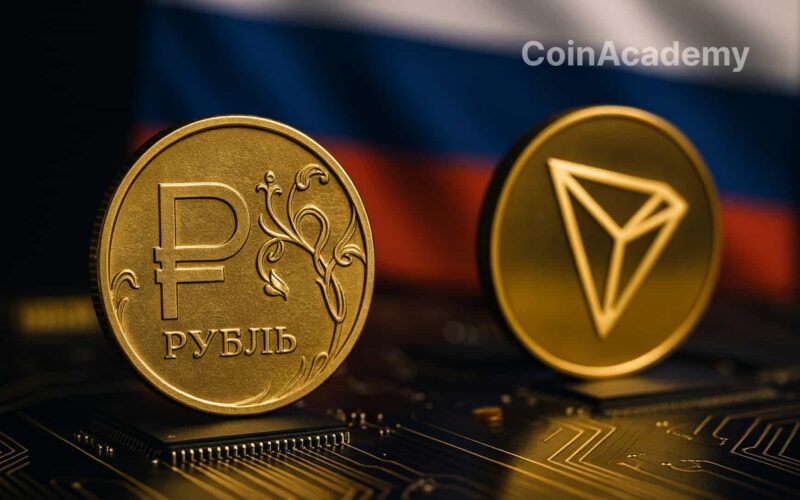Forget the digital ruble project led by the Central Bank: Russia is preparing another token, 100% issued by the state giant Rostec. Its name: RUBx. Its ambition? To create a stablecoin backed by the Russian ruble, indexed 1:1 to a real reserve held in cash. And this time, it’s not an experiment: the launch is scheduled before the end of 2025, with an integrated payment hub called RT-Pay.
Russia is getting (another) new digital ruble
Rostec, the Russian state industrial behemoth, is not just producing missiles and turbines: it now aims to establish itself in the national payment blockchain infrastructure. RUBx will be issued on the Tron blockchain, a choice that may surprise but is explained by the scalability and speed of this network.
Of course, each RUBx will be backed by a real ruble obligation, enshrined in law. Rostec will be the sole issuer, guaranteeing an overt centralization. CertiK, a well-known blockchain cybersecurity company, has been hired to audit the contract, which will be published on GitHub.
RT-Pay: a Russian Stripe on the blockchain
That’s where the project gets really serious. RT-Pay will be directly connected to the Russian banking rails, allowing instant transfers between businesses and individuals, even outside business hours.
Another promise: full compliance with anti-money laundering (AML) and anti-terrorism (CFT) regulations, directly in line with the requirements of the Central Bank of Russia. The system will also use smart contracts to lock funds, an essential building block for developing new on-chain services in a country seeking digital monetary sovereignty.
The new platform will be implemented in stages, taking into account the needs of various sectors of the economy.
Special attention will be given to security issues and integration with the existing financial infrastructure.
In the future, the ecosystem could become the basis for a number of innovative financial services.
A Russia increasingly crypto-compatible
This project is part of a broader shift. The Kremlin is sending more signals of openness to crypto: since the beginning of the year, the Bank of Russia has been allowing financial instruments backed by crypto assets for qualified investors.
Major players like Sberbank or the Moscow Exchange have already launched products related to Bitcoin. Meanwhile, reports reveal that some Russian companies are using BTC, ETH, or stablecoins to convert yuan and rupees into rubles, circumventing a portion of Western sanctions.
Towards an on-chain parallel economy?
Behind this project, a clear ambition emerges: to create a sovereign and programmable alternative to the SWIFT system, entirely controlled by Russia. A state digital currency, but without going through the Central Bank.
By betting on the public blockchain Tron, while maintaining total control over the issuance and anchoring of the stablecoin, Rostec proposes a hybrid model: crypto in tech, state-owned in governance.




